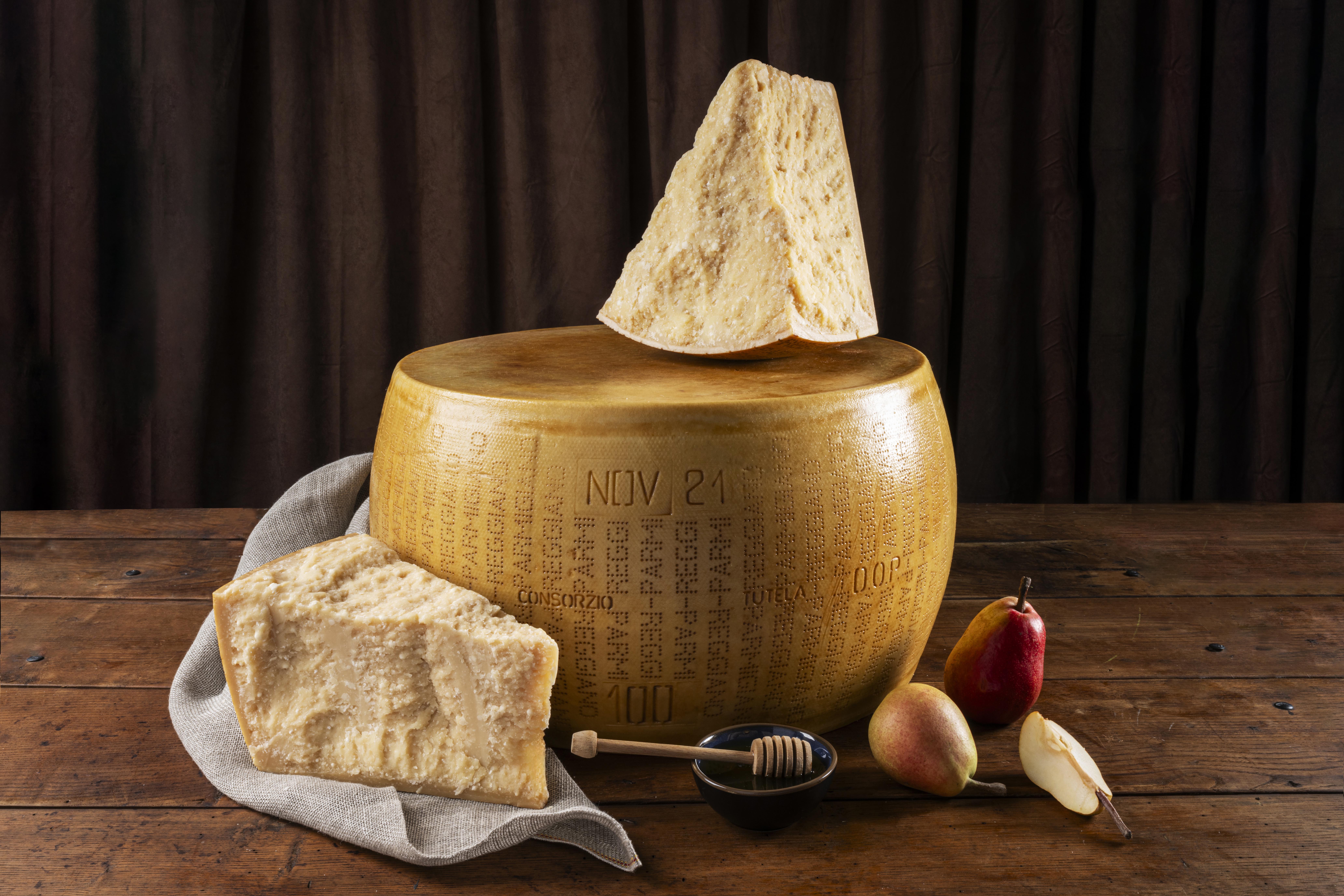By infopadweb 3 April 2024
PARMIGIANO REGGIANO PDO
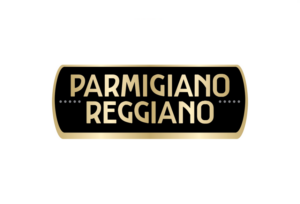 |
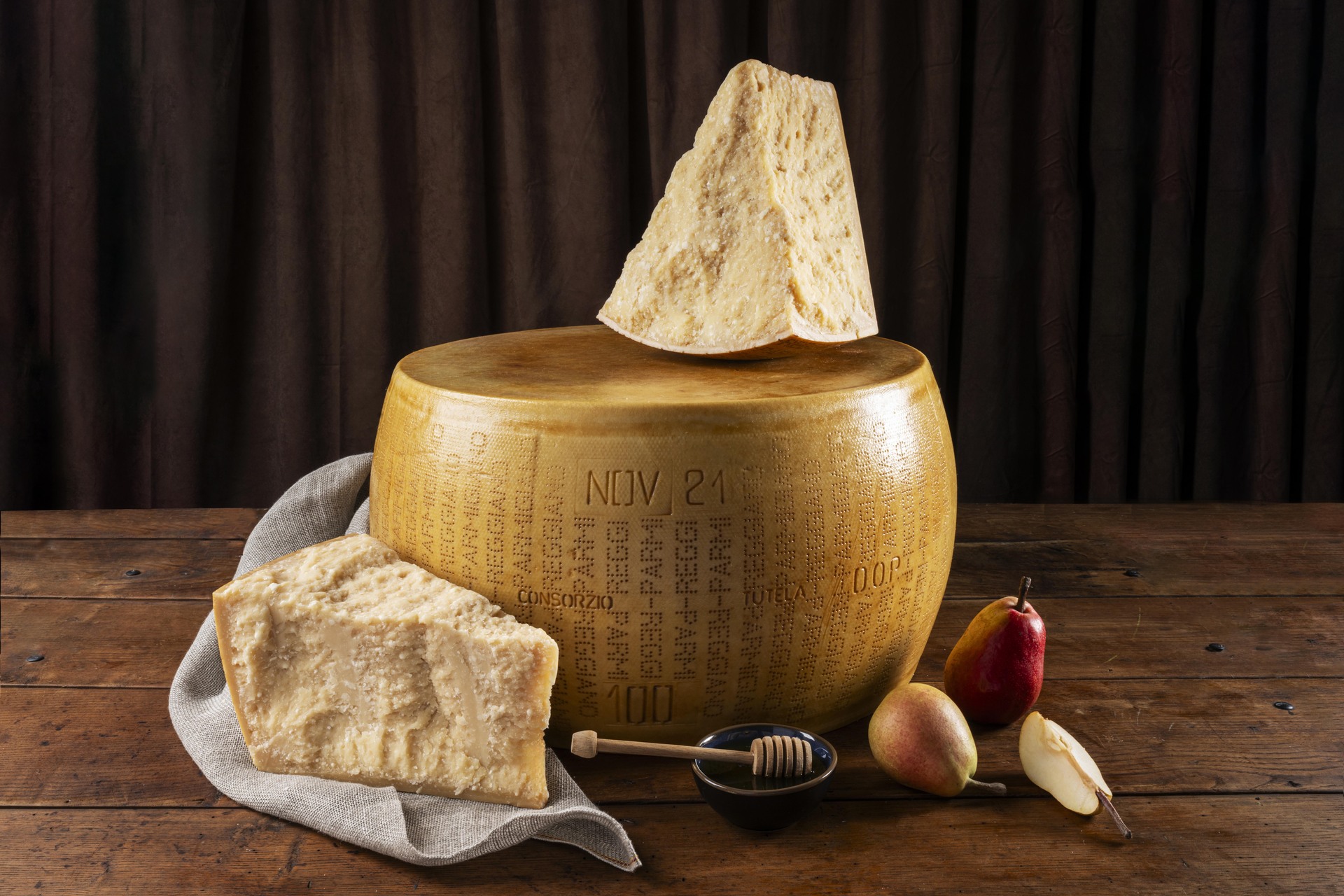 |
DESCRIPTION, HISTORY AND CHARACTERISTICS OF THE PDO
Parmigiano Reggiano is among the oldest and richest cheeses known. It is produced today essentially the same as it was a thousand years ago: with the same ingredients (milk, salt and rennet), with the same artisan care and with a production technique that has changed little over the centuries, thanks to the decision to maintain a completely natural production process, without the use of additives.
What strongly binds Parmigiano Reggiano to its area of origin and makes it so that in no other place in the world can the same product be manufactured, even if the same production techniques were used, are the aspects associated to culture and tradition. It is first and foremost a microbiological characteristic that binds Parmigiano Reggiano to its area of origin. Only raw milk produced in the area of origin is indeed used to produce Parmigiano Reggiano cheese. It is a special milk, characterised by a unique and intense bacterial activity of the local microbial flora, influenced by environmental factors, especially by the forage, grass and hay from the area that account for the main feed of the cows dedicated to this specific production.
Its numerous properties are all linked to the intrinsic product quality: digestibility, high calcium content present in a bioavailable form, source of phosphorous, absence of additives and preservatives, source of minerals, organoleptic pleasantness and liking. Due to these characteristics, Parmigiano Reggiano is a fundamental food in the daily diet of everyone, from children to elderly people, including athletes who find in Parmigiano Reggiano a fully natural energy charge. Thanks to its production process, the King of Cheeses is also naturally lactose free already 48 hours from production since all its sugar (lactose) is transformed into lactic acid by lactic bacteria.
Only three ingredients are used to produce Parmigiano Reggiano: milk, salt and rennet. Milk is used raw, i.e. it does not undergo heat treatments, therefore it features all the richness of lactic ferments naturally present in it. The microbial flora composition is influenced by the environmental factors of the area of origin, especially by hay and the specific feeding of cattle. For the production of Parmigiano Reggiano cheese, only calf rennet is used; rennet is obtained from the stomach of suckling calves (bacterial rennet is forbidden) and kitchen salt (sodium chloride). The use of any additives and selected bacterial starters is forbidden.
Parmigiano Reggiano has always been an expression of its land of origin and of Italy worldwide until its very origins, which are old and noble and date back to the Middle Ages. In particular, monks were the first producers of Parmigiano Reggiano, driven by the quest for a cheese featuring one main characteristic: that of lasting for a long time. They achieved this result by letting the cheese mass dry and increasing the wheel size, thus enabling the cheese to keep long and thus to travel, including far away from the production area. This feature has been Parmigiano Reggiano’s fortune, resulting in it travelling around the world for centuries to become an authentic expression of what we call today the Made in Italy agribusiness. The first written evidence dates back to 1254 in a notarial deed found in the State Archives of Genoa where a the caseus parmensis, i.e. the cheese from Parma, is mentioned. The best known literary evidence dates back to 1344: Giovanni Boccaccio in the Decameron described the district of Bengodi and mentioned a mountain of “grated Parmesan” on which “Macaroni and ravioli” were rolled, which is a clear indication of the product’s use in the kitchen.
Consortium
the consortium for the protection of Parmigiano Reggiano
The Parmigiano Reggiano Consortium is the protection body that includes all Parmigiano Reggiano producers, who process the milk from the farmers of the area of origin into this DOP cheese complying with the Specifications. It was set up in 1934 and has the purpose of protecting, defending and promoting the product, safeguarding its typicality and disseminating its knowledge worldwide. Its production is governed by strict Specifications, registered with the European Union, because Parmigiano Reggiano is a cheese with Protected Designation of Origin (DOP), i.e. a product that, based on its distinctive characteristics and its tie to the area of origin, is safeguarded by a system provided by the EU to protect consumers and producers alike. To bear the designation “Parmigiano Reggiano DOP”, the cheese has to be made respecting strict rules. First of all, it has to be produced in the Area of origin (which includes the provinces of Parma, Reggio Emilia, Modena, Mantua to the right of the Po river, and Bologna to the left of the Reno River – a surface of approximately 10,000 km2). The production of cow’s milk, the processing into cheese, the maturation until a minimum age of 12 months, the packaging and the grating of Parmigiano Reggiano DOP has to take place exclusively in the area of origin. Therefore, it is not possible to make Parmigiano Reggiano cheese with milk produced outside this area or coming from abroad. Furthermore, Parmigiano Reggiano has to be made using artisan and natural methods that are established in the Product Regulation and in the strict Specifications, which set forth specific production procedures (Production Standard), a special diet for cows (Feeding Regulation for Dairy Cattle), rules for using the hot-iron mark (Marking Regulation). Every wheel of Parmigiano Reggiano is given a mark of origin (the well known “dots” and starting from 2002 also a “casein plate”). Furthermore, every wheel is quality tested at an age of about 12 months. Only if the wheel passes this test, it is branded with the selection mark (oval mark). The certification of conformity with the Specifications is given by the P-R Quality Control Body on behalf of the European Union and the Ministry.
Recipe
RISOTTO WITH PARMIGIANO REGGIANO DOP WITH WATERCRESS, POLLEN AND HAZELNUT CRUMBLE
| 4 people Preparation: 15′ Cooking: 20′ |
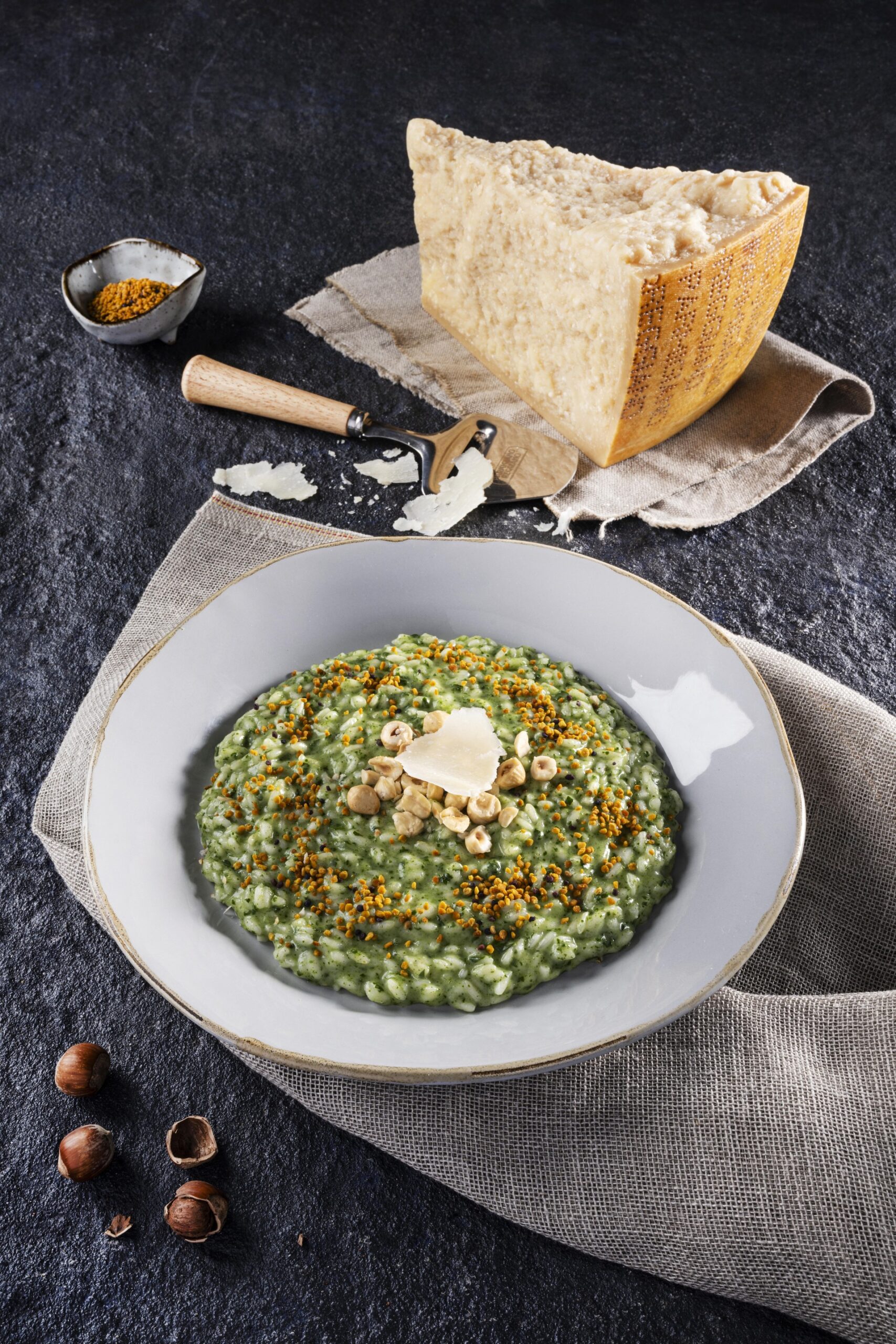 |
Ingredients:
– 300 g Carnaroli rice
– 2 spring onions
– 100 g watercress
– 1.5 liters vegetable broth
– half a glass of white wine
– 80 g Parmigiano Reggiano DOP
– 1 tablespoon pollen
– 30 g toasted hazelnuts
– 40 g butter
– salt
Clean the spring onions and chop them finely, clean and wash the watercress and blanch it in boiling vegetable broth for one minute. Drain it with a skimmer, let it cool, squeeze it out and chop it finely. Toast the rice in a saucepan over low heat, stirring constantly, add 10 g butter and the prepared spring onions, deglaze with white wine and let it evaporate. Bring the risotto to cook by gradually adding boiling vegetable stock and turn off when the rice is very al dente. Add 50 g grated Parmigiano Reggiano DOP, the remaining butter and the chopped watercress, stir-fry for a few minutes, cover the casserole dish and let stand for 5 minutes. Serve on plates and sprinkle with pollen , chopped hazelnuts and Parmigiano Reggiano DOP reduced to thin slivers.
Regions
PARMIGIANO REGGIANO DOP
| Lombardy Emilia Romagna |
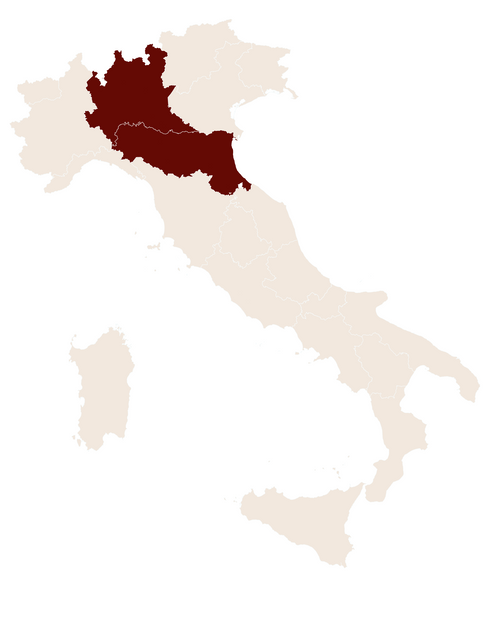 |
